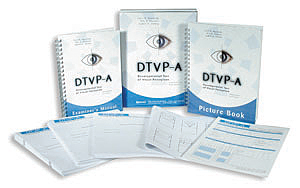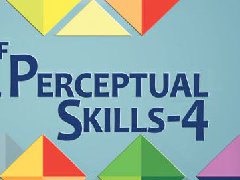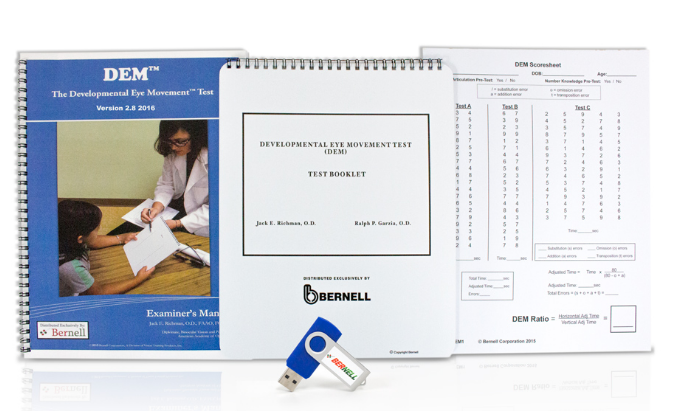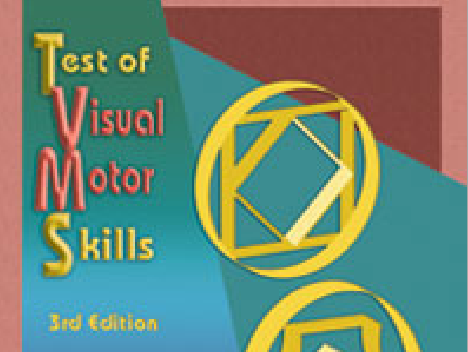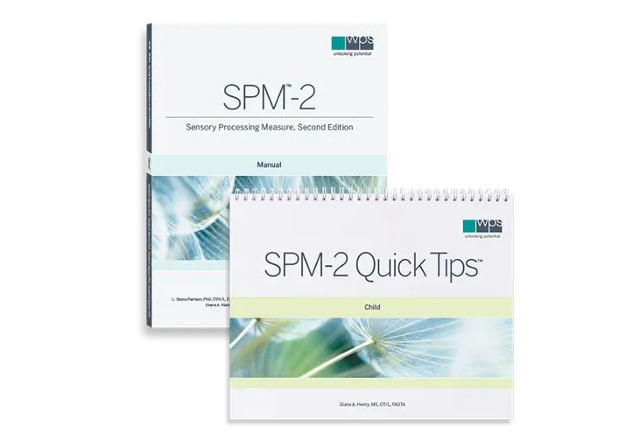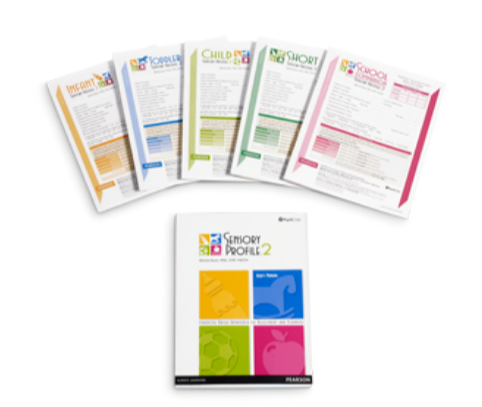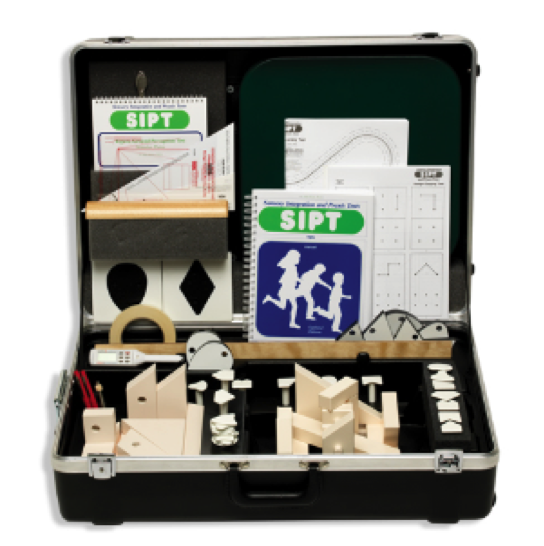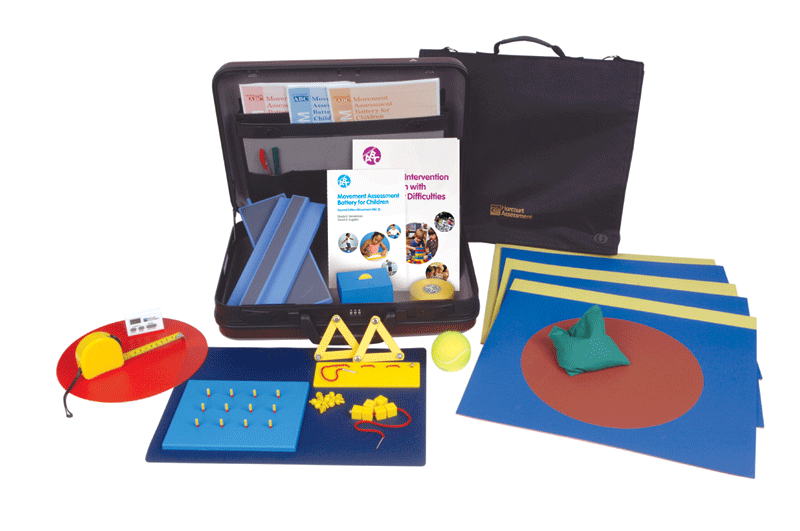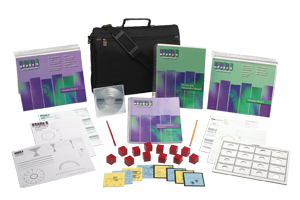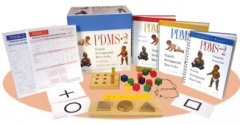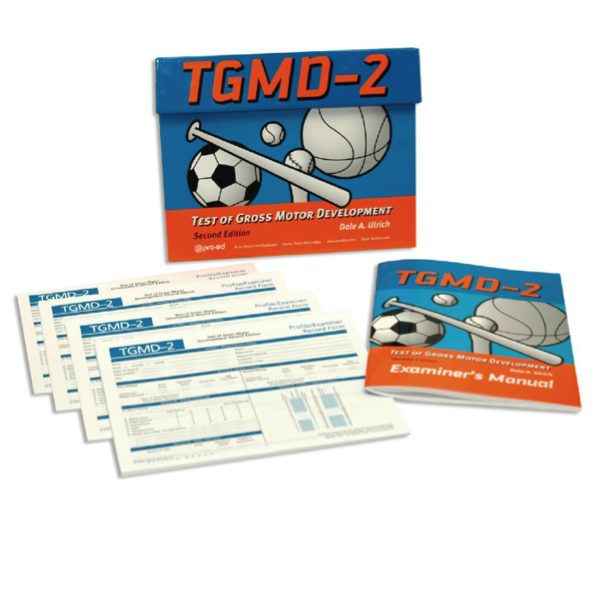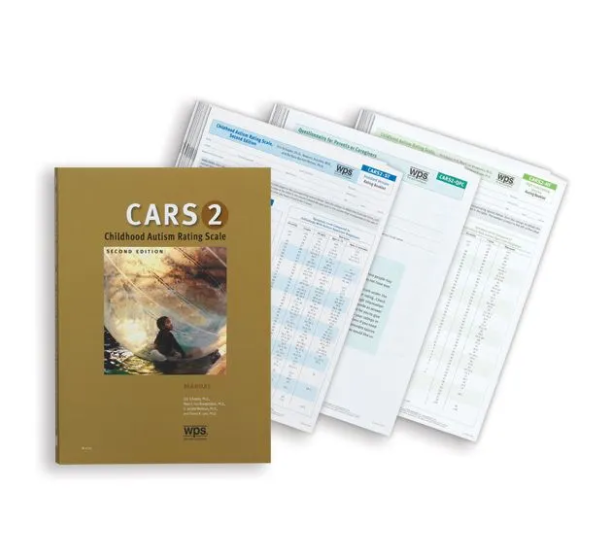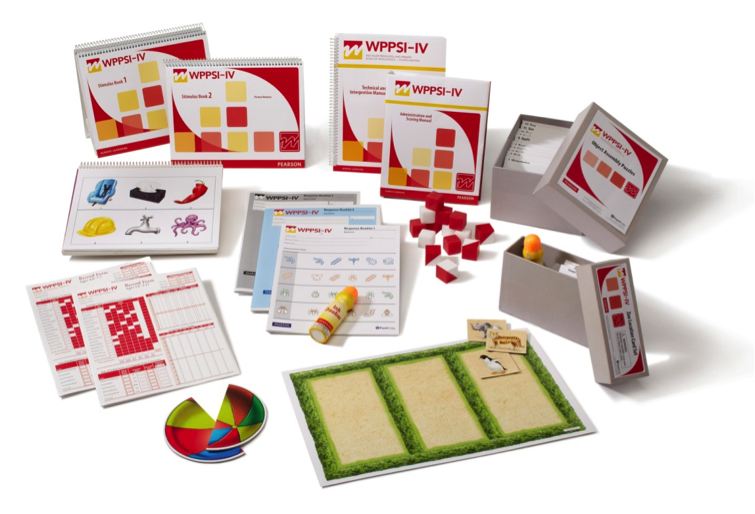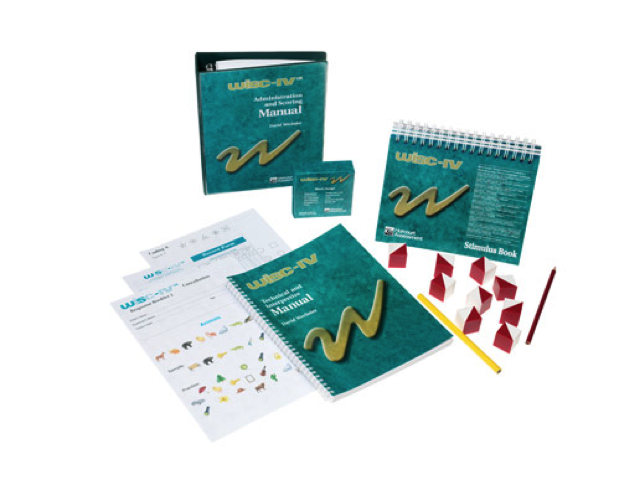

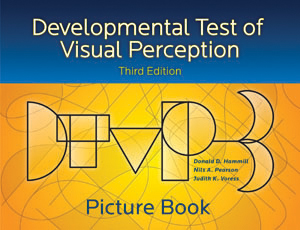

 DTVP-3视知觉发展测试第三版
DTVP-3视知觉发展测试第三版
DTVP-3视知觉发展测试第三版( Developmental Test of Visual Perception,简称DTVP),是评估4岁至12岁11个月儿童的视觉感知和视觉运动整合技能的一套纸笔测验,适合于有学习困难或有神经障碍的儿童。DTVP包括五个领域:眼动协调、图案背景恒定性、形状知觉、空间位置和空间关系,分数以知觉商数表示。
DTVP-3视知觉发展测试第三版,是在广为使用的,由玛丽安·弗罗斯蒂格(Marianne Frostig)编著的DTVP基础上修订的最新版本,DTVP-3的独特之处在于,在关于视觉感知发育及视觉整合运动发育的测试中,DTVP-3分测项目中的信度在.80或以上,并且在混合年龄组中的测试结果信度在.90及以上。许多研究验证了DTVP-3的分数;测试产生的分数包括视觉感知(无运动反应)和视觉运动整合能力。
研究证明DTVP-3涉及人种、性别及偏手倾向的因素不会对测试造成影响。
开发者:Donald D Hammill, Nils A Pearson, Judith K Voress
发布年份:2013
测试年龄范围:4岁至12岁11个月
测试时间:30分钟
资质代码:B
DTVP-3的新特点
DTVP-3有5个分测项目
1. 手眼协调能力。参与测试的儿童被要求在视觉边界画一条直线或者曲线。
2. 模仿能力。展示参与测试的儿童一个简单的图形并要求其在纸上画出。在绘制过程中可参考样本图形。随着测试继续图案会趋于复杂。
3. 图案—背景测试。测试者展示测试图案,并要求受测试儿童尽可能多地在一页上找出被藏在背景当中的数字。
4. 视觉完形测试。测试者展示测试图案并要求受测试儿童从一系列图形中选择出残缺图形正确的完整形状。为了完成测试,受测试儿童必须通过想象将图形残缺部分填补完整。
5. 形状恒常性测试。将一个图形展示给受测试儿童并要求他们在一系列图形中将其挑选出来。目标图形进行过缩放、旋转和/或带有阴影,甚至可能藏在易分散注意力的背景之中。
DTVP-3复合材料
将五个DTVP-3子测验的结果组合成三个复合测验:运动减少的视觉知觉、视觉-运动整合和一般视觉知觉(运动减少和运动增强子测验的组合)。子测验是根据其形式要求的运动能力分配给特定组合的。
DTVP-3视知觉发展测验第三版,完全套装,包括:
测试人员指导手册、测试图册、25回应小册子、25测试者记录册以及一份复制评分模板,以上物品均置于牢固套装盒内。
DTVP-3视知觉发展测试第三版(Developmental Test of Visual Perception - Third Edition,DTVP-3),文献索引(部分)
-
Clin Exp Optom. 2022 Jan;105(1):32-36.doi: 10.1080/08164622.2021.1878823. Epub 2021 Feb 28.
《Visual-perceptual function of children using the developmental test of visual perception-3》
-
Autism Res. 2021 Feb;14(2):315-323.doi: 10.1002/aur.2367. Epub 2020 Sep 3.
《Relationship Between the Performance of Self-Care and Visual Perception Among Young Children With Autism Spectrum Disorder and Typical Developing Children》
-
Heliyon. 2019 Oct 16;5(10):e02587.doi: 10.1016/j.heliyon.2019.e02587. eCollection 2019 Oct.
《Pre-schoolers' visual perception and attention networks influencing naming speed: An individual difference perspective》
-
Occup Ther Health Care. 2016 Jul;30(3):272-88.doi: 10.3109/07380577.2015.1136757. Epub 2016 Feb 25.
《Validity and Reliability of the Developmental Test of Visual Perception - Third Edition (DTVP-3)》
-
J Exp Child Psychol. 2016 Oct;150:301-313. doi: 10.1016/j.jecp.2016.05.009. Epub 2016 Jul 1.
《Development of SNARC and distance effects and their relation to mathematical and visuospatial abilities》
本产品重要说明:
-
语言:英文
-
计分表格:纸张
-
国际惯例:相应的专业人员购买并使用
-
产品主要参数:DTVP-3(Developmental Test of Visual Perception - Third Edition)
-
原装进口,产地美国
-
尊重并维护知识产权,请在需要的时候,按以下列表选择购买使用量表类产品,以实现教学、科研等工作的严谨性和信效度
|
套装 |
|
|
|
13700 |
DTVP-3视知觉发展测验第三版,完全套装 |
电邮询价 |
|
手册 |
|
|
|
13701 |
DTVP-3视知觉发展测验第三版,考官指导手册 |
电邮询价 |
|
管理组件 |
|
|
|
13702 |
DTVP-3视知觉发展测验第三版,画册 |
电邮询价 |
|
13705 |
DTVP-3视知觉发展测验第三版,评分模板 |
电邮询价 |
|
量表 |
|
|
|
13703 |
DTVP-3视知觉发展测验第三版,考官记录手册(25份) |
电邮询价 |
|
13704 |
DTVP-3视知觉发展测验第三版,应答手册(25份) |
电邮询价 |
视知觉发展测验 DTVP-3: Developmental Test of Visual Perception – Third Edition The DTVP-3 is the most recent revision of Marianne Frostig’s popular Developmental Test of Visual Perception. Of all the tests of visual perception and visual-motor integration, the DTVP-3 is unique in that its scores are reliable at the .80 level or above for all subtests and .90 or above for the composites for all age groups; its scores are validated by many studies; its norms are based on a large (N = 1,035), representative sample; it yields scores for both visual perception (no motor response) and visual-motor integration ability; and it is shown to be unbiased relative to race, gender, and handedness. New Features of the DTVP-3 New normative data were collected in 2010 and 2011 Norms were extended upward to age 12 years, 11 months The composite scores have no floor or ceiling effects Numerous eligibility and validity studies, including studies of the test’s sensitivity, specificity, and ROC/AUC, have been provided The study of item bias has been expanded The overall look of the test was updated DTVP-3 Subtests The DTVP-3 has five subtests. 6. Eye-Hand Coordination. Children are required to draw precise straight or curved lines in accordance with visual boundaries. 7. Copying. Children are shown a simple figure and asked to draw it on a piece of paper. The figure serves as a model for the drawing. Subsequent figures are increasingly complex. 8. Figure-Ground. Children are shown stimulus figures and asked to find as many of the figures as they can on a page where the figures are hidden in a complex, confusing background. 9. Visual Closure. Children are shown a stimulus figure and asked to select the exact figure from a series of figures that have been incompletely drawn. In order to complete the match, children have to mentally supply the missing parts of the figures in the series. 10. Form Constancy. Children are shown a stimulus figure and asked to find it in a series of figures. The targeted figure will have a different size, position, and/or shade, and it may be hidden in a distracting background. DTVP-3 Composites The results of the five DTVP-3 subtests are combined to form three composites: Motor-reduced Visual Perception, Visual-Motor Integration, and General Visual Perception (combination of motor-reduced and motor-enhanced subtests). Subtests were assigned to a particular composite on the basis of the amount of motor ability required by their formats. COMPLETE DTVP-3 KIT INCLUDES: Examiner’s Manual, Picture Book, 25 Response Booklets, 25 Examiner Record Booklets, and a Copying scoring template, all in a sturdy storage box. DTVP-3 DTVP-3 Complete Kit Email for quotation
视知觉发展测验 DTVP-3: Developmental Test of Visual Perception – Third Edition The DTVP-3 is the most recent revision of Marianne Frostig’s popular Developmental Test of Visual Perception. Of all the tests of visual perception and visual-motor integration, the DTVP-3 is unique in that its scores are reliable at the .80 level or above for all subtests and .90 or above for the composites for all age groups; its scores are validated by many studies; its norms are based on a large (N = 1,035), representative sample; it yields scores for both visual perception (no motor response) and visual-motor integration ability; and it is shown to be unbiased relative to race, gender, and handedness. New Features of the DTVP-3 New normative data were collected in 2010 and 2011 Norms were extended upward to age 12 years, 11 months The composite scores have no floor or ceiling effects Numerous eligibility and validity studies, including studies of the test’s sensitivity, specificity, and ROC/AUC, have been provided The study of item bias has been expanded The overall look of the test was updated DTVP-3 Subtests The DTVP-3 has five subtests. 6. Eye-Hand Coordination. Children are required to draw precise straight or curved lines in accordance with visual boundaries. 7. Copying. Children are shown a simple figure and asked to draw it on a piece of paper. The figure serves as a model for the drawing. Subsequent figures are increasingly complex. 8. Figure-Ground. Children are shown stimulus figures and asked to find as many of the figures as they can on a page where the figures are hidden in a complex, confusing background. 9. Visual Closure. Children are shown a stimulus figure and asked to select the exact figure from a series of figures that have been incompletely drawn. In order to complete the match, children have to mentally supply the missing parts of the figures in the series. 10. Form Constancy. Children are shown a stimulus figure and asked to find it in a series of figures. The targeted figure will have a different size, position, and/or shade, and it may be hidden in a distracting background. DTVP-3 Composites The results of the five DTVP-3 subtests are combined to form three composites: Motor-reduced Visual Perception, Visual-Motor Integration, and General Visual Perception (combination of motor-reduced and motor-enhanced subtests). Subtests were assigned to a particular composite on the basis of the amount of motor ability required by their formats. COMPLETE DTVP-3 KIT INCLUDES: Examiner’s Manual, Picture Book, 25 Response Booklets, 25 Examiner Record Booklets, and a Copying scoring template, all in a sturdy storage box. DTVP-3 DTVP-3 Complete Kit Email for quotation
视知觉发展测验 DTVP-3: Developmental Test of Visual Perception – Third Edition The DTVP-3 is the most recent revision of Marianne Frostig’s popular Developmental Test of Visual Perception. Of all the tests of visual perception and visual-motor integration, the DTVP-3 is unique in that its scores are reliable at the .80 level or above for all subtests and .90 or above for the composites for all age groups; its scores are validated by many studies; its norms are based on a large (N = 1,035), representative sample; it yields scores for both visual perception (no motor response) and visual-motor integration ability; and it is shown to be unbiased relative to race, gender, and handedness. New Features of the DTVP-3 New normative data were collected in 2010 and 2011 Norms were extended upward to age 12 years, 11 months The composite scores have no floor or ceiling effects Numerous eligibility and validity studies, including studies of the test’s sensitivity, specificity, and ROC/AUC, have been provided The study of item bias has been expanded The overall look of the test was updated DTVP-3 Subtests The DTVP-3 has five subtests. 6. Eye-Hand Coordination. Children are required to draw precise straight or curved lines in accordance with visual boundaries. 7. Copying. Children are shown a simple figure and asked to draw it on a piece of paper. The figure serves as a model for the drawing. Subsequent figures are increasingly complex. 8. Figure-Ground. Children are shown stimulus figures and asked to find as many of the figures as they can on a page where the figures are hidden in a complex, confusing background. 9. Visual Closure. Children are shown a stimulus figure and asked to select the exact figure from a series of figures that have been incompletely drawn. In order to complete the match, children have to mentally supply the missing parts of the figures in the series. 10. Form Constancy. Children are shown a stimulus figure and asked to find it in a series of figures. The targeted figure will have a different size, position, and/or shade, and it may be hidden in a distracting background. DTVP-3 Composites The results of the five DTVP-3 subtests are combined to form three composites: Motor-reduced Visual Perception, Visual-Motor Integration, and General Visual Perception (combination of motor-reduced and motor-enhanced subtests). Subtests were assigned to a particular composite on the basis of the amount of motor ability required by their formats. COMPLETE DTVP-3 KIT INCLUDES: Examiner’s Manual, Picture Book, 25 Response Booklets, 25 Examiner Record Booklets, and a Copying scoring template, all in a sturdy storage box. DTVP-3 DTVP-3 Complete Kit Email for quotation
视知觉发展测验 DTVP-3: Developmental Test of Visual Perception – Third Edition The DTVP-3 is the most recent revision of Marianne Frostig’s popular Developmental Test of Visual Perception. Of all the tests of visual perception and visual-motor integration, the DTVP-3 is unique in that its scores are reliable at the .80 level or above for all subtests and .90 or above for the composites for all age groups; its scores are validated by many studies; its norms are based on a large (N = 1,035), representative sample; it yields scores for both visual perception (no motor response) and visual-motor integration ability; and it is shown to be unbiased relative to race, gender, and handedness. New Features of the DTVP-3 New normative data were collected in 2010 and 2011 Norms were extended upward to age 12 years, 11 months The composite scores have no floor or ceiling effects Numerous eligibility and validity studies, including studies of the test’s sensitivity, specificity, and ROC/AUC, have been provided The study of item bias has been expanded The overall look of the test was updated DTVP-3 Subtests The DTVP-3 has five subtests. 6. Eye-Hand Coordination. Children are required to draw precise straight or curved lines in accordance with visual boundaries. 7. Copying. Children are shown a simple figure and asked to draw it on a piece of paper. The figure serves as a model for the drawing. Subsequent figures are increasingly complex. 8. Figure-Ground. Children are shown stimulus figures and asked to find as many of the figures as they can on a page where the figures are hidden in a complex, confusing background. 9. Visual Closure. Children are shown a stimulus figure and asked to select the exact figure from a series of figures that have been incompletely drawn. In order to complete the match, children have to mentally supply the missing parts of the figures in the series. 10. Form Constancy. Children are shown a stimulus figure and asked to find it in a series of figures. The targeted figure will have a different size, position, and/or shade, and it may be hidden in a distracting background. DTVP-3 Composites The results of the five DTVP-3 subtests are combined to form three composites: Motor-reduced Visual Perception, Visual-Motor Integration, and General Visual Perception (combination of motor-reduced and motor-enhanced subtests). Subtests were assigned to a particular composite on the basis of the amount of motor ability required by their formats. COMPLETE DTVP-3 KIT INCLUDES: Examiner’s Manual, Picture Book, 25 Response Booklets, 25 Examiner Record Booklets, and a Copying scoring template, all in a sturdy storage box. DTVP-3 DTVP-3 Complete Kit Email for quotation
视知觉发展测验 DTVP-3: Developmental Test of Visual Perception – Third Edition The DTVP-3 is the most recent revision of Marianne Frostig’s popular Developmental Test of Visual Perception. Of all the tests of visual perception and visual-motor integration, the DTVP-3 is unique in that its scores are reliable at the .80 level or above for all subtests and .90 or above for the composites for all age groups; its scores are validated by many studies; its norms are based on a large (N = 1,035), representative sample; it yields scores for both visual perception (no motor response) and visual-motor integration ability; and it is shown to be unbiased relative to race, gender, and handedness. New Features of the DTVP-3 New normative data were collected in 2010 and 2011 Norms were extended upward to age 12 years, 11 months The composite scores have no floor or ceiling effects Numerous eligibility and validity studies, including studies of the test’s sensitivity, specificity, and ROC/AUC, have been provided The study of item bias has been expanded The overall look of the test was updated DTVP-3 Subtests The DTVP-3 has five subtests. 6. Eye-Hand Coordination. Children are required to draw precise straight or curved lines in accordance with visual boundaries. 7. Copying. Children are shown a simple figure and asked to draw it on a piece of paper. The figure serves as a model for the drawing. Subsequent figures are increasingly complex. 8. Figure-Ground. Children are shown stimulus figures and asked to find as many of the figures as they can on a page where the figures are hidden in a complex, confusing background. 9. Visual Closure. Children are shown a stimulus figure and asked to select the exact figure from a series of figures that have been incompletely drawn. In order to complete the match, children have to mentally supply the missing parts of the figures in the series. 10. Form Constancy. Children are shown a stimulus figure and asked to find it in a series of figures. The targeted figure will have a different size, position, and/or shade, and it may be hidden in a distracting background. DTVP-3 Composites The results of the five DTVP-3 subtests are combined to form three composites: Motor-reduced Visual Perception, Visual-Motor Integration, and General Visual Perception (combination of motor-reduced and motor-enhanced subtests). Subtests were assigned to a particular composite on the basis of the amount of motor ability required by their formats. COMPLETE DTVP-3 KIT INCLUDES: Examiner’s Manual, Picture Book, 25 Response Booklets, 25 Examiner Record Booklets, and a Copying scoring template, all in a sturdy storage box. DTVP-3 DTVP-3 Complete Kit Email for quotation
视知觉发展测验 DTVP-3: Developmental Test of Visual Perception – Third Edition The DTVP-3 is the most recent revision of Marianne Frostig’s popular Developmental Test of Visual Perception. Of all the tests of visual perception and visual-motor integration, the DTVP-3 is unique in that its scores are reliable at the .80 level or above for all subtests and .90 or above for the composites for all age groups; its scores are validated by many studies; its norms are based on a large (N = 1,035), representative sample; it yields scores for both visual perception (no motor response) and visual-motor integration ability; and it is shown to be unbiased relative to race, gender, and handedness. New Features of the DTVP-3 New normative data were collected in 2010 and 2011 Norms were extended upward to age 12 years, 11 months The composite scores have no floor or ceiling effects Numerous eligibility and validity studies, including studies of the test’s sensitivity, specificity, and ROC/AUC, have been provided The study of item bias has been expanded The overall look of the test was updated DTVP-3 Subtests The DTVP-3 has five subtests. 6. Eye-Hand Coordination. Children are required to draw precise straight or curved lines in accordance with visual boundaries. 7. Copying. Children are shown a simple figure and asked to draw it on a piece of paper. The figure serves as a model for the drawing. Subsequent figures are increasingly complex. 8. Figure-Ground. Children are shown stimulus figures and asked to find as many of the figures as they can on a page where the figures are hidden in a complex, confusing background. 9. Visual Closure. Children are shown a stimulus figure and asked to select the exact figure from a series of figures that have been incompletely drawn. In order to complete the match, children have to mentally supply the missing parts of the figures in the series. 10. Form Constancy. Children are shown a stimulus figure and asked to find it in a series of figures. The targeted figure will have a different size, position, and/or shade, and it may be hidden in a distracting background. DTVP-3 Composites The results of the five DTVP-3 subtests are combined to form three composites: Motor-reduced Visual Perception, Visual-Motor Integration, and General Visual Perception (combination of motor-reduced and motor-enhanced subtests). Subtests were assigned to a particular composite on the basis of the amount of motor ability required by their formats. COMPLETE DTVP-3 KIT INCLUDES: Examiner’s Manual, Picture Book, 25 Response Booklets, 25 Examiner Record Booklets, and a Copying scoring template, all in a sturdy storage box. DTVP-3 DTVP-3 Complete Kit Email for quotation
视知觉发展测验 DTVP-3: Developmental Test of Visual Perception – Third Edition The DTVP-3 is the most recent revision of Marianne Frostig’s popular Developmental Test of Visual Perception. Of all the tests of visual perception and visual-motor integration, the DTVP-3 is unique in that its scores are reliable at the .80 level or above for all subtests and .90 or above for the composites for all age groups; its scores are validated by many studies; its norms are based on a large (N = 1,035), representative sample; it yields scores for both visual perception (no motor response) and visual-motor integration ability; and it is shown to be unbiased relative to race, gender, and handedness. New Features of the DTVP-3 New normative data were collected in 2010 and 2011 Norms were extended upward to age 12 years, 11 months The composite scores have no floor or ceiling effects Numerous eligibility and validity studies, including studies of the test’s sensitivity, specificity, and ROC/AUC, have been provided The study of item bias has been expanded The overall look of the test was updated DTVP-3 Subtests The DTVP-3 has five subtests. 6. Eye-Hand Coordination. Children are required to draw precise straight or curved lines in accordance with visual boundaries. 7. Copying. Children are shown a simple figure and asked to draw it on a piece of paper. The figure serves as a model for the drawing. Subsequent figures are increasingly complex. 8. Figure-Ground. Children are shown stimulus figures and asked to find as many of the figures as they can on a page where the figures are hidden in a complex, confusing background. 9. Visual Closure. Children are shown a stimulus figure and asked to select the exact figure from a series of figures that have been incompletely drawn. In order to complete the match, children have to mentally supply the missing parts of the figures in the series. 10. Form Constancy. Children are shown a stimulus figure and asked to find it in a series of figures. The targeted figure will have a different size, position, and/or shade, and it may be hidden in a distracting background. DTVP-3 Composites The results of the five DTVP-3 subtests are combined to form three composites: Motor-reduced Visual Perception, Visual-Motor Integration, and General Visual Perception (combination of motor-reduced and motor-enhanced subtests). Subtests were assigned to a particular composite on the basis of the amount of motor ability required by their formats. COMPLETE DTVP-3 KIT INCLUDES: Examiner’s Manual, Picture Book, 25 Response Booklets, 25 Examiner Record Booklets, and a Copying scoring template, all in a sturdy storage box. DTVP-3 DTVP-3 Complete Kit Email for quotation
视知觉发展测验 DTVP-3: Developmental Test of Visual Perception – Third Edition The DTVP-3 is the most recent revision of Marianne Frostig’s popular Developmental Test of Visual Perception. Of all the tests of visual perception and visual-motor integration, the DTVP-3 is unique in that its scores are reliable at the .80 level or above for all subtests and .90 or above for the composites for all age groups; its scores are validated by many studies; its norms are based on a large (N = 1,035), representative sample; it yields scores for both visual perception (no motor response) and visual-motor integration ability; and it is shown to be unbiased relative to race, gender, and handedness. New Features of the DTVP-3 New normative data were collected in 2010 and 2011 Norms were extended upward to age 12 years, 11 months The composite scores have no floor or ceiling effects Numerous eligibility and validity studies, including studies of the test’s sensitivity, specificity, and ROC/AUC, have been provided The study of item bias has been expanded The overall look of the test was updated DTVP-3 Subtests The DTVP-3 has five subtests. 6. Eye-Hand Coordination. Children are required to draw precise straight or curved lines in accordance with visual boundaries. 7. Copying. Children are shown a simple figure and asked to draw it on a piece of paper. The figure serves as a model for the drawing. Subsequent figures are increasingly complex. 8. Figure-Ground. Children are shown stimulus figures and asked to find as many of the figures as they can on a page where the figures are hidden in a complex, confusing background. 9. Visual Closure. Children are shown a stimulus figure and asked to select the exact figure from a series of figures that have been incompletely drawn. In order to complete the match, children have to mentally supply the missing parts of the figures in the series. 10. Form Constancy. Children are shown a stimulus figure and asked to find it in a series of figures. The targeted figure will have a different size, position, and/or shade, and it may be hidden in a distracting background. DTVP-3 Composites The results of the five DTVP-3 subtests are combined to form three composites: Motor-reduced Visual Perception, Visual-Motor Integration, and General Visual Perception (combination of motor-reduced and motor-enhanced subtests). Subtests were assigned to a particular composite on the basis of the amount of motor ability required by their formats. COMPLETE DTVP-3 KIT INCLUDES: Examiner’s Manual, Picture Book, 25 Response Booklets, 25 Examiner Record Booklets, and a Copying scoring template, all in a sturdy storage box. DTVP-3 DTVP-3 Complete Kit Email for quotation
视知觉发展测验 DTVP-3: Developmental Test of Visual Perception – Third Edition The DTVP-3 is the most recent revision of Marianne Frostig’s popular Developmental Test of Visual Perception. Of all the tests of visual perception and visual-motor integration, the DTVP-3 is unique in that its scores are reliable at the .80 level or above for all subtests and .90 or above for the composites for all age groups; its scores are validated by many studies; its norms are based on a large (N = 1,035), representative sample; it yields scores for both visual perception (no motor response) and visual-motor integration ability; and it is shown to be unbiased relative to race, gender, and handedness. New Features of the DTVP-3 New normative data were collected in 2010 and 2011 Norms were extended upward to age 12 years, 11 months The composite scores have no floor or ceiling effects Numerous eligibility and validity studies, including studies of the test’s sensitivity, specificity, and ROC/AUC, have been provided The study of item bias has been expanded The overall look of the test was updated DTVP-3 Subtests The DTVP-3 has five subtests. 6. Eye-Hand Coordination. Children are required to draw precise straight or curved lines in accordance with visual boundaries. 7. Copying. Children are shown a simple figure and asked to draw it on a piece of paper. The figure serves as a model for the drawing. Subsequent figures are increasingly complex. 8. Figure-Ground. Children are shown stimulus figures and asked to find as many of the figures as they can on a page where the figures are hidden in a complex, confusing background. 9. Visual Closure. Children are shown a stimulus figure and asked to select the exact figure from a series of figures that have been incompletely drawn. In order to complete the match, children have to mentally supply the missing parts of the figures in the series. 10. Form Constancy. Children are shown a stimulus figure and asked to find it in a series of figures. The targeted figure will have a different size, position, and/or shade, and it may be hidden in a distracting background. DTVP-3 Composites The results of the five DTVP-3 subtests are combined to form three composites: Motor-reduced Visual Perception, Visual-Motor Integration, and General Visual Perception (combination of motor-reduced and motor-enhanced subtests). Subtests were assigned to a particular composite on the basis of the amount of motor ability required by their formats. COMPLETE DTVP-3 KIT INCLUDES: Examiner’s Manual, Picture Book, 25 Response Booklets, 25 Examiner Record Booklets, and a Copying scoring template, all in a sturdy storage box. DTVP-3 DTVP-3 Complete Kit Email for quotation
视知觉发展测验 DTVP-3: Developmental Test of Visual Perception – Third Edition The DTVP-3 is the most recent revision of Marianne Frostig’s popular Developmental Test of Visual Perception. Of all the tests of visual perception and visual-motor integration, the DTVP-3 is unique in that its scores are reliable at the .80 level or above for all subtests and .90 or above for the composites for all age groups; its scores are validated by many studies; its norms are based on a large (N = 1,035), representative sample; it yields scores for both visual perception (no motor response) and visual-motor integration ability; and it is shown to be unbiased relative to race, gender, and handedness. New Features of the DTVP-3 New normative data were collected in 2010 and 2011 Norms were extended upward to age 12 years, 11 months The composite scores have no floor or ceiling effects Numerous eligibility and validity studies, including studies of the test’s sensitivity, specificity, and ROC/AUC, have been provided The study of item bias has been expanded The overall look of the test was updated DTVP-3 Subtests The DTVP-3 has five subtests. 6. Eye-Hand Coordination. Children are required to draw precise straight or curved lines in accordance with visual boundaries. 7. Copying. Children are shown a simple figure and asked to draw it on a piece of paper. The figure serves as a model for the drawing. Subsequent figures are increasingly complex. 8. Figure-Ground. Children are shown stimulus figures and asked to find as many of the figures as they can on a page where the figures are hidden in a complex, confusing background. 9. Visual Closure. Children are shown a stimulus figure and asked to select the exact figure from a series of figures that have been incompletely drawn. In order to complete the match, children have to mentally supply the missing parts of the figures in the series. 10. Form Constancy. Children are shown a stimulus figure and asked to find it in a series of figures. The targeted figure will have a different size, position, and/or shade, and it may be hidden in a distracting background. DTVP-3 Composites The results of the five DTVP-3 subtests are combined to form three composites: Motor-reduced Visual Perception, Visual-Motor Integration, and General Visual Perception (combination of motor-reduced and motor-enhanced subtests). Subtests were assigned to a particular composite on the basis of the amount of motor ability required by their formats. COMPLETE DTVP-3 KIT INCLUDES: Examiner’s Manual, Picture Book, 25 Response Booklets, 25 Examiner Record Booklets, and a Copying scoring template, all in a sturdy storage box. DTVP-3 DTVP-3 Complete Kit Email for quotation
视知觉发展测验 DTVP-3: Developmental Test of Visual Perception – Third Edition The DTVP-3 is the most recent revision of Marianne Frostig’s popular Developmental Test of Visual Perception. Of all the tests of visual perception and visual-motor integration, the DTVP-3 is unique in that its scores are reliable at the .80 level or above for all subtests and .90 or above for the composites for all age groups; its scores are validated by many studies; its norms are based on a large (N = 1,035), representative sample; it yields scores for both visual perception (no motor response) and visual-motor integration ability; and it is shown to be unbiased relative to race, gender, and handedness. New Features of the DTVP-3 New normative data were collected in 2010 and 2011 Norms were extended upward to age 12 years, 11 months The composite scores have no floor or ceiling effects Numerous eligibility and validity studies, including studies of the test’s sensitivity, specificity, and ROC/AUC, have been provided The study of item bias has been expanded The overall look of the test was updated DTVP-3 Subtests The DTVP-3 has five subtests. 6. Eye-Hand Coordination. Children are required to draw precise straight or curved lines in accordance with visual boundaries. 7. Copying. Children are shown a simple figure and asked to draw it on a piece of paper. The figure serves as a model for the drawing. Subsequent figures are increasingly complex. 8. Figure-Ground. Children are shown stimulus figures and asked to find as many of the figures as they can on a page where the figures are hidden in a complex, confusing background. 9. Visual Closure. Children are shown a stimulus figure and asked to select the exact figure from a series of figures that have been incompletely drawn. In order to complete the match, children have to mentally supply the missing parts of the figures in the series. 10. Form Constancy. Children are shown a stimulus figure and asked to find it in a series of figures. The targeted figure will have a different size, position, and/or shade, and it may be hidden in a distracting background. DTVP-3 Composites The results of the five DTVP-3 subtests are combined to form three composites: Motor-reduced Visual Perception, Visual-Motor Integration, and General Visual Perception (combination of motor-reduced and motor-enhanced subtests). Subtests were assigned to a particular composite on the basis of the amount of motor ability required by their formats. COMPLETE DTVP-3 KIT INCLUDES: Examiner’s Manual, Picture Book, 25 Response Booklets, 25 Examiner Record Booklets, and a Copying scoring template, all in a sturdy storage box. DTVP-3 DTVP-3 Complete Kit Email for quotation
视知觉发展测验 DTVP-3: Developmental Test of Visual Perception – Third Edition The DTVP-3 is the most recent revision of Marianne Frostig’s popular Developmental Test of Visual Perception. Of all the tests of visual perception and visual-motor integration, the DTVP-3 is unique in that its scores are reliable at the .80 level or above for all subtests and .90 or above for the composites for all age groups; its scores are validated by many studies; its norms are based on a large (N = 1,035), representative sample; it yields scores for both visual perception (no motor response) and visual-motor integration ability; and it is shown to be unbiased relative to race, gender, and handedness. New Features of the DTVP-3 New normative data were collected in 2010 and 2011 Norms were extended upward to age 12 years, 11 months The composite scores have no floor or ceiling effects Numerous eligibility and validity studies, including studies of the test’s sensitivity, specificity, and ROC/AUC, have been provided The study of item bias has been expanded The overall look of the test was updated DTVP-3 Subtests The DTVP-3 has five subtests. 6. Eye-Hand Coordination. Children are required to draw precise straight or curved lines in accordance with visual boundaries. 7. Copying. Children are shown a simple figure and asked to draw it on a piece of paper. The figure serves as a model for the drawing. Subsequent figures are increasingly complex. 8. Figure-Ground. Children are shown stimulus figures and asked to find as many of the figures as they can on a page where the figures are hidden in a complex, confusing background. 9. Visual Closure. Children are shown a stimulus figure and asked to select the exact figure from a series of figures that have been incompletely drawn. In order to complete the match, children have to mentally supply the missing parts of the figures in the series. 10. Form Constancy. Children are shown a stimulus figure and asked to find it in a series of figures. The targeted figure will have a different size, position, and/or shade, and it may be hidden in a distracting background. DTVP-3 Composites The results of the five DTVP-3 subtests are combined to form three composites: Motor-reduced Visual Perception, Visual-Motor Integration, and General Visual Perception (combination of motor-reduced and motor-enhanced subtests). Subtests were assigned to a particular composite on the basis of the amount of motor ability required by their formats. COMPLETE DTVP-3 KIT INCLUDES: Examiner’s Manual, Picture Book, 25 Response Booklets, 25 Examiner Record Booklets, and a Copying scoring template, all in a sturdy storage box. DTVP-3 DTVP-3 Complete Kit Email for quotation
视知觉发展测验 DTVP-3: Developmental Test of Visual Perception – Third Edition The DTVP-3 is the most recent revision of Marianne Frostig’s popular Developmental Test of Visual Perception. Of all the tests of visual perception and visual-motor integration, the DTVP-3 is unique in that its scores are reliable at the .80 level or above for all subtests and .90 or above for the composites for all age groups; its scores are validated by many studies; its norms are based on a large (N = 1,035), representative sample; it yields scores for both visual perception (no motor response) and visual-motor integration ability; and it is shown to be unbiased relative to race, gender, and handedness. New Features of the DTVP-3 New normative data were collected in 2010 and 2011 Norms were extended upward to age 12 years, 11 months The composite scores have no floor or ceiling effects Numerous eligibility and validity studies, including studies of the test’s sensitivity, specificity, and ROC/AUC, have been provided The study of item bias has been expanded The overall look of the test was updated DTVP-3 Subtests The DTVP-3 has five subtests. 6. Eye-Hand Coordination. Children are required to draw precise straight or curved lines in accordance with visual boundaries. 7. Copying. Children are shown a simple figure and asked to draw it on a piece of paper. The figure serves as a model for the drawing. Subsequent figures are increasingly complex. 8. Figure-Ground. Children are shown stimulus figures and asked to find as many of the figures as they can on a page where the figures are hidden in a complex, confusing background. 9. Visual Closure. Children are shown a stimulus figure and asked to select the exact figure from a series of figures that have been incompletely drawn. In order to complete the match, children have to mentally supply the missing parts of the figures in the series. 10. Form Constancy. Children are shown a stimulus figure and asked to find it in a series of figures. The targeted figure will have a different size, position, and/or shade, and it may be hidden in a distracting background. DTVP-3 Composites The results of the five DTVP-3 subtests are combined to form three composites: Motor-reduced Visual Perception, Visual-Motor Integration, and General Visual Perception (combination of motor-reduced and motor-enhanced subtests). Subtests were assigned to a particular composite on the basis of the amount of motor ability required by their formats. COMPLETE DTVP-3 KIT INCLUDES: Examiner’s Manual, Picture Book, 25 Response Booklets, 25 Examiner Record Booklets, and a Copying scoring template, all in a sturdy storage box. DTVP-3 DTVP-3 Complete Kit Email for quotation
视知觉发展测验 DTVP-3: Developmental Test of Visual Perception – Third Edition The DTVP-3 is the most recent revision of Marianne Frostig’s popular Developmental Test of Visual Perception. Of all the tests of visual perception and visual-motor integration, the DTVP-3 is unique in that its scores are reliable at the .80 level or above for all subtests and .90 or above for the composites for all age groups; its scores are validated by many studies; its norms are based on a large (N = 1,035), representative sample; it yields scores for both visual perception (no motor response) and visual-motor integration ability; and it is shown to be unbiased relative to race, gender, and handedness. New Features of the DTVP-3 New normative data were collected in 2010 and 2011 Norms were extended upward to age 12 years, 11 months The composite scores have no floor or ceiling effects Numerous eligibility and validity studies, including studies of the test’s sensitivity, specificity, and ROC/AUC, have been provided The study of item bias has been expanded The overall look of the test was updated DTVP-3 Subtests The DTVP-3 has five subtests. 6. Eye-Hand Coordination. Children are required to draw precise straight or curved lines in accordance with visual boundaries. 7. Copying. Children are shown a simple figure and asked to draw it on a piece of paper. The figure serves as a model for the drawing. Subsequent figures are increasingly complex. 8. Figure-Ground. Children are shown stimulus figures and asked to find as many of the figures as they can on a page where the figures are hidden in a complex, confusing background. 9. Visual Closure. Children are shown a stimulus figure and asked to select the exact figure from a series of figures that have been incompletely drawn. In order to complete the match, children have to mentally supply the missing parts of the figures in the series. 10. Form Constancy. Children are shown a stimulus figure and asked to find it in a series of figures. The targeted figure will have a different size, position, and/or shade, and it may be hidden in a distracting background. DTVP-3 Composites The results of the five DTVP-3 subtests are combined to form three composites: Motor-reduced Visual Perception, Visual-Motor Integration, and General Visual Perception (combination of motor-reduced and motor-enhanced subtests). Subtests were assigned to a particular composite on the basis of the amount of motor ability required by their formats. COMPLETE DTVP-3 KIT INCLUDES: Examiner’s Manual, Picture Book, 25 Response Booklets, 25 Examiner Record Booklets, and a Copying scoring template, all in a sturdy storage box. DTVP-3 DTVP-3 Complete Kit Email for quotation
视知觉发展测验 DTVP-3: Developmental Test of Visual Perception – Third Edition The DTVP-3 is the most recent revision of Marianne Frostig’s popular Developmental Test of Visual Perception. Of all the tests of visual perception and visual-motor integration, the DTVP-3 is unique in that its scores are reliable at the .80 level or above for all subtests and .90 or above for the composites for all age groups; its scores are validated by many studies; its norms are based on a large (N = 1,035), representative sample; it yields scores for both visual perception (no motor response) and visual-motor integration ability; and it is shown to be unbiased relative to race, gender, and handedness. New Features of the DTVP-3 New normative data were collected in 2010 and 2011 Norms were extended upward to age 12 years, 11 months The composite scores have no floor or ceiling effects Numerous eligibility and validity studies, including studies of the test’s sensitivity, specificity, and ROC/AUC, have been provided The study of item bias has been expanded The overall look of the test was updated DTVP-3 Subtests The DTVP-3 has five subtests. 6. Eye-Hand Coordination. Children are required to draw precise straight or curved lines in accordance with visual boundaries. 7. Copying. Children are shown a simple figure and asked to draw it on a piece of paper. The figure serves as a model for the drawing. Subsequent figures are increasingly complex. 8. Figure-Ground. Children are shown stimulus figures and asked to find as many of the figures as they can on a page where the figures are hidden in a complex, confusing background. 9. Visual Closure. Children are shown a stimulus figure and asked to select the exact figure from a series of figures that have been incompletely drawn. In order to complete the match, children have to mentally supply the missing parts of the figures in the series. 10. Form Constancy. Children are shown a stimulus figure and asked to find it in a series of figures. The targeted figure will have a different size, position, and/or shade, and it may be hidden in a distracting background. DTVP-3 Composites The results of the five DTVP-3 subtests are combined to form three composites: Motor-reduced Visual Perception, Visual-Motor Integration, and General Visual Perception (combination of motor-reduced and motor-enhanced subtests). Subtests were assigned to a particular composite on the basis of the amount of motor ability required by their formats. COMPLETE DTVP-3 KIT INCLUDES: Examiner’s Manual, Picture Book, 25 Response Booklets, 25 Examiner Record Booklets, and a Copying scoring template, all in a sturdy storage box. DTVP-3 DTVP-3 Complete Kit Email for quotation
视知觉发展测验 DTVP-3: Developmental Test of Visual Perception – Third Edition The DTVP-3 is the most recent revision of Marianne Frostig’s popular Developmental Test of Visual Perception. Of all the tests of visual perception and visual-motor integration, the DTVP-3 is unique in that its scores are reliable at the .80 level or above for all subtests and .90 or above for the composites for all age groups; its scores are validated by many studies; its norms are based on a large (N = 1,035), representative sample; it yields scores for both visual perception (no motor response) and visual-motor integration ability; and it is shown to be unbiased relative to race, gender, and handedness. New Features of the DTVP-3 New normative data were collected in 2010 and 2011 Norms were extended upward to age 12 years, 11 months The composite scores have no floor or ceiling effects Numerous eligibility and validity studies, including studies of the test’s sensitivity, specificity, and ROC/AUC, have been provided The study of item bias has been expanded The overall look of the test was updated DTVP-3 Subtests The DTVP-3 has five subtests. 6. Eye-Hand Coordination. Children are required to draw precise straight or curved lines in accordance with visual boundaries. 7. Copying. Children are shown a simple figure and asked to draw it on a piece of paper. The figure serves as a model for the drawing. Subsequent figures are increasingly complex. 8. Figure-Ground. Children are shown stimulus figures and asked to find as many of the figures as they can on a page where the figures are hidden in a complex, confusing background. 9. Visual Closure. Children are shown a stimulus figure and asked to select the exact figure from a series of figures that have been incompletely drawn. In order to complete the match, children have to mentally supply the missing parts of the figures in the series. 10. Form Constancy. Children are shown a stimulus figure and asked to find it in a series of figures. The targeted figure will have a different size, position, and/or shade, and it may be hidden in a distracting background. DTVP-3 Composites The results of the five DTVP-3 subtests are combined to form three composites: Motor-reduced Visual Perception, Visual-Motor Integration, and General Visual Perception (combination of motor-reduced and motor-enhanced subtests). Subtests were assigned to a particular composite on the basis of the amount of motor ability required by their formats. COMPLETE DTVP-3 KIT INCLUDES: Examiner’s Manual, Picture Book, 25 Response Booklets, 25 Examiner Record Booklets, and a Copying scoring template, all in a sturdy storage box. DTVP-3 DTVP-3 Complete Kit Email for quotation
视知觉发展测验 DTVP-3: Developmental Test of Visual Perception – Third Edition The DTVP-3 is the most recent revision of Marianne Frostig’s popular Developmental Test of Visual Perception. Of all the tests of visual perception and visual-motor integration, the DTVP-3 is unique in that its scores are reliable at the .80 level or above for all subtests and .90 or above for the composites for all age groups; its scores are validated by many studies; its norms are based on a large (N = 1,035), representative sample; it yields scores for both visual perception (no motor response) and visual-motor integration ability; and it is shown to be unbiased relative to race, gender, and handedness. New Features of the DTVP-3 New normative data were collected in 2010 and 2011 Norms were extended upward to age 12 years, 11 months The composite scores have no floor or ceiling effects Numerous eligibility and validity studies, including studies of the test’s sensitivity, specificity, and ROC/AUC, have been provided The study of item bias has been expanded The overall look of the test was updated DTVP-3 Subtests The DTVP-3 has five subtests. 6. Eye-Hand Coordination. Children are required to draw precise straight or curved lines in accordance with visual boundaries. 7. Copying. Children are shown a simple figure and asked to draw it on a piece of paper. The figure serves as a model for the drawing. Subsequent figures are increasingly complex. 8. Figure-Ground. Children are shown stimulus figures and asked to find as many of the figures as they can on a page where the figures are hidden in a complex, confusing background. 9. Visual Closure. Children are shown a stimulus figure and asked to select the exact figure from a series of figures that have been incompletely drawn. In order to complete the match, children have to mentally supply the missing parts of the figures in the series. 10. Form Constancy. Children are shown a stimulus figure and asked to find it in a series of figures. The targeted figure will have a different size, position, and/or shade, and it may be hidden in a distracting background. DTVP-3 Composites The results of the five DTVP-3 subtests are combined to form three composites: Motor-reduced Visual Perception, Visual-Motor Integration, and General Visual Perception (combination of motor-reduced and motor-enhanced subtests). Subtests were assigned to a particular composite on the basis of the amount of motor ability required by their formats. COMPLETE DTVP-3 KIT INCLUDES: Examiner’s Manual, Picture Book, 25 Response Booklets, 25 Examiner Record Booklets, and a Copying scoring template, all in a sturdy storage box. DTVP-3 DTVP-3 Complete Kit Email for quotation
视知觉发展测验 DTVP-3: Developmental Test of Visual Perception – Third Edition The DTVP-3 is the most recent revision of Marianne Frostig’s popular Developmental Test of Visual Perception. Of all the tests of visual perception and visual-motor integration, the DTVP-3 is unique in that its scores are reliable at the .80 level or above for all subtests and .90 or above for the composites for all age groups; its scores are validated by many studies; its norms are based on a large (N = 1,035), representative sample; it yields scores for both visual perception (no motor response) and visual-motor integration ability; and it is shown to be unbiased relative to race, gender, and handedness. New Features of the DTVP-3 New normative data were collected in 2010 and 2011 Norms were extended upward to age 12 years, 11 months The composite scores have no floor or ceiling effects Numerous eligibility and validity studies, including studies of the test’s sensitivity, specificity, and ROC/AUC, have been provided The study of item bias has been expanded The overall look of the test was updated DTVP-3 Subtests The DTVP-3 has five subtests. 6. Eye-Hand Coordination. Children are required to draw precise straight or curved lines in accordance with visual boundaries. 7. Copying. Children are shown a simple figure and asked to draw it on a piece of paper. The figure serves as a model for the drawing. Subsequent figures are increasingly complex. 8. Figure-Ground. Children are shown stimulus figures and asked to find as many of the figures as they can on a page where the figures are hidden in a complex, confusing background. 9. Visual Closure. Children are shown a stimulus figure and asked to select the exact figure from a series of figures that have been incompletely drawn. In order to complete the match, children have to mentally supply the missing parts of the figures in the series. 10. Form Constancy. Children are shown a stimulus figure and asked to find it in a series of figures. The targeted figure will have a different size, position, and/or shade, and it may be hidden in a distracting background. DTVP-3 Composites The results of the five DTVP-3 subtests are combined to form three composites: Motor-reduced Visual Perception, Visual-Motor Integration, and General Visual Perception (combination of motor-reduced and motor-enhanced subtests). Subtests were assigned to a particular composite on the basis of the amount of motor ability required by their formats. COMPLETE DTVP-3 KIT INCLUDES: Examiner’s Manual, Picture Book, 25 Response Booklets, 25 Examiner Record Booklets, and a Copying scoring template, all in a sturdy storage box. DTVP-3 DTVP-3 Complete Kit Email for quotation
视知觉发展测验 DTVP-3: Developmental Test of Visual Perception – Third Edition The DTVP-3 is the most recent revision of Marianne Frostig’s popular Developmental Test of Visual Perception. Of all the tests of visual perception and visual-motor integration, the DTVP-3 is unique in that its scores are reliable at the .80 level or above for all subtests and .90 or above for the composites for all age groups; its scores are validated by many studies; its norms are based on a large (N = 1,035), representative sample; it yields scores for both visual perception (no motor response) and visual-motor integration ability; and it is shown to be unbiased relative to race, gender, and handedness. New Features of the DTVP-3 New normative data were collected in 2010 and 2011 Norms were extended upward to age 12 years, 11 months The composite scores have no floor or ceiling effects Numerous eligibility and validity studies, including studies of the test’s sensitivity, specificity, and ROC/AUC, have been provided The study of item bias has been expanded The overall look of the test was updated DTVP-3 Subtests The DTVP-3 has five subtests. 6. Eye-Hand Coordination. Children are required to draw precise straight or curved lines in accordance with visual boundaries. 7. Copying. Children are shown a simple figure and asked to draw it on a piece of paper. The figure serves as a model for the drawing. Subsequent figures are increasingly complex. 8. Figure-Ground. Children are shown stimulus figures and asked to find as many of the figures as they can on a page where the figures are hidden in a complex, confusing background. 9. Visual Closure. Children are shown a stimulus figure and asked to select the exact figure from a series of figures that have been incompletely drawn. In order to complete the match, children have to mentally supply the missing parts of the figures in the series. 10. Form Constancy. Children are shown a stimulus figure and asked to find it in a series of figures. The targeted figure will have a different size, position, and/or shade, and it may be hidden in a distracting background. DTVP-3 Composites The results of the five DTVP-3 subtests are combined to form three composites: Motor-reduced Visual Perception, Visual-Motor Integration, and General Visual Perception (combination of motor-reduced and motor-enhanced subtests). Subtests were assigned to a particular composite on the basis of the amount of motor ability required by their formats. COMPLETE DTVP-3 KIT INCLUDES: Examiner’s Manual, Picture Book, 25 Response Booklets, 25 Examiner Record Booklets, and a Copying scoring template, all in a sturdy storage box. DTVP-3 DTVP-3 Complete Kit Email for quotation
视知觉发展测验 DTVP-3: Developmental Test of Visual Perception – Third Edition The DTVP-3 is the most recent revision of Marianne Frostig’s popular Developmental Test of Visual Perception. Of all the tests of visual perception and visual-motor integration, the DTVP-3 is unique in that its scores are reliable at the .80 level or above for all subtests and .90 or above for the composites for all age groups; its scores are validated by many studies; its norms are based on a large (N = 1,035), representative sample; it yields scores for both visual perception (no motor response) and visual-motor integration ability; and it is shown to be unbiased relative to race, gender, and handedness. New Features of the DTVP-3 New normative data were collected in 2010 and 2011 Norms were extended upward to age 12 years, 11 months The composite scores have no floor or ceiling effects Numerous eligibility and validity studies, including studies of the test’s sensitivity, specificity, and ROC/AUC, have been provided The study of item bias has been expanded The overall look of the test was updated DTVP-3 Subtests The DTVP-3 has five subtests. 6. Eye-Hand Coordination. Children are required to draw precise straight or curved lines in accordance with visual boundaries. 7. Copying. Children are shown a simple figure and asked to draw it on a piece of paper. The figure serves as a model for the drawing. Subsequent figures are increasingly complex. 8. Figure-Ground. Children are shown stimulus figures and asked to find as many of the figures as they can on a page where the figures are hidden in a complex, confusing background. 9. Visual Closure. Children are shown a stimulus figure and asked to select the exact figure from a series of figures that have been incompletely drawn. In order to complete the match, children have to mentally supply the missing parts of the figures in the series. 10. Form Constancy. Children are shown a stimulus figure and asked to find it in a series of figures. The targeted figure will have a different size, position, and/or shade, and it may be hidden in a distracting background. DTVP-3 Composites The results of the five DTVP-3 subtests are combined to form three composites: Motor-reduced Visual Perception, Visual-Motor Integration, and General Visual Perception (combination of motor-reduced and motor-enhanced subtests). Subtests were assigned to a particular composite on the basis of the amount of motor ability required by their formats. COMPLETE DTVP-3 KIT INCLUDES: Examiner’s Manual, Picture Book, 25 Response Booklets, 25 Examiner Record Booklets, and a Copying scoring template, all in a sturdy storage box. DTVP-3 DTVP-3 Complete Kit Email for quotation
视知觉发展测验 DTVP-3: Developmental Test of Visual Perception – Third Edition The DTVP-3 is the most recent revision of Marianne Frostig’s popular Developmental Test of Visual Perception. Of all the tests of visual perception and visual-motor integration, the DTVP-3 is unique in that its scores are reliable at the .80 level or above for all subtests and .90 or above for the composites for all age groups; its scores are validated by many studies; its norms are based on a large (N = 1,035), representative sample; it yields scores for both visual perception (no motor response) and visual-motor integration ability; and it is shown to be unbiased relative to race, gender, and handedness. New Features of the DTVP-3 New normative data were collected in 2010 and 2011 Norms were extended upward to age 12 years, 11 months The composite scores have no floor or ceiling effects Numerous eligibility and validity studies, including studies of the test’s sensitivity, specificity, and ROC/AUC, have been provided The study of item bias has been expanded The overall look of the test was updated DTVP-3 Subtests The DTVP-3 has five subtests. 6. Eye-Hand Coordination. Children are required to draw precise straight or curved lines in accordance with visual boundaries. 7. Copying. Children are shown a simple figure and asked to draw it on a piece of paper. The figure serves as a model for the drawing. Subsequent figures are increasingly complex. 8. Figure-Ground. Children are shown stimulus figures and asked to find as many of the figures as they can on a page where the figures are hidden in a complex, confusing background. 9. Visual Closure. Children are shown a stimulus figure and asked to select the exact figure from a series of figures that have been incompletely drawn. In order to complete the match, children have to mentally supply the missing parts of the figures in the series. 10. Form Constancy. Children are shown a stimulus figure and asked to find it in a series of figures. The targeted figure will have a different size, position, and/or shade, and it may be hidden in a distracting background. DTVP-3 Composites The results of the five DTVP-3 subtests are combined to form three composites: Motor-reduced Visual Perception, Visual-Motor Integration, and General Visual Perception (combination of motor-reduced and motor-enhanced subtests). Subtests were assigned to a particular composite on the basis of the amount of motor ability required by their formats. COMPLETE DTVP-3 KIT INCLUDES: Examiner’s Manual, Picture Book, 25 Response Booklets, 25 Examiner Record Booklets, and a Copying scoring template, all in a sturdy storage box. DTVP-3 DTVP-3 Complete Kit Email for quotation
视知觉发展测验 DTVP-3: Developmental Test of Visual Perception – Third Edition The DTVP-3 is the most recent revision of Marianne Frostig’s popular Developmental Test of Visual Perception. Of all the tests of visual perception and visual-motor integration, the DTVP-3 is unique in that its scores are reliable at the .80 level or above for all subtests and .90 or above for the composites for all age groups; its scores are validated by many studies; its norms are based on a large (N = 1,035), representative sample; it yields scores for both visual perception (no motor response) and visual-motor integration ability; and it is shown to be unbiased relative to race, gender, and handedness. New Features of the DTVP-3 New normative data were collected in 2010 and 2011 Norms were extended upward to age 12 years, 11 months The composite scores have no floor or ceiling effects Numerous eligibility and validity studies, including studies of the test’s sensitivity, specificity, and ROC/AUC, have been provided The study of item bias has been expanded The overall look of the test was updated DTVP-3 Subtests The DTVP-3 has five subtests. 6. Eye-Hand Coordination. Children are required to draw precise straight or curved lines in accordance with visual boundaries. 7. Copying. Children are shown a simple figure and asked to draw it on a piece of paper. The figure serves as a model for the drawing. Subsequent figures are increasingly complex. 8. Figure-Ground. Children are shown stimulus figures and asked to find as many of the figures as they can on a page where the figures are hidden in a complex, confusing background. 9. Visual Closure. Children are shown a stimulus figure and asked to select the exact figure from a series of figures that have been incompletely drawn. In order to complete the match, children have to mentally supply the missing parts of the figures in the series. 10. Form Constancy. Children are shown a stimulus figure and asked to find it in a series of figures. The targeted figure will have a different size, position, and/or shade, and it may be hidden in a distracting background. DTVP-3 Composites The results of the five DTVP-3 subtests are combined to form three composites: Motor-reduced Visual Perception, Visual-Motor Integration, and General Visual Perception (combination of motor-reduced and motor-enhanced subtests). Subtests were assigned to a particular composite on the basis of the amount of motor ability required by their formats. COMPLETE DTVP-3 KIT INCLUDES: Examiner’s Manual, Picture Book, 25 Response Booklets, 25 Examiner Record Booklets, and a Copying scoring template, all in a sturdy storage box. DTVP-3 DTVP-3 Complete Kit Email for quotation
视知觉发展测验 DTVP-3: Developmental Test of Visual Perception – Third Edition The DTVP-3 is the most recent revision of Marianne Frostig’s popular Developmental Test of Visual Perception. Of all the tests of visual perception and visual-motor integration, the DTVP-3 is unique in that its scores are reliable at the .80 level or above for all subtests and .90 or above for the composites for all age groups; its scores are validated by many studies; its norms are based on a large (N = 1,035), representative sample; it yields scores for both visual perception (no motor response) and visual-motor integration ability; and it is shown to be unbiased relative to race, gender, and handedness. New Features of the DTVP-3 New normative data were collected in 2010 and 2011 Norms were extended upward to age 12 years, 11 months The composite scores have no floor or ceiling effects Numerous eligibility and validity studies, including studies of the test’s sensitivity, specificity, and ROC/AUC, have been provided The study of item bias has been expanded The overall look of the test was updated DTVP-3 Subtests The DTVP-3 has five subtests. 6. Eye-Hand Coordination. Children are required to draw precise straight or curved lines in accordance with visual boundaries. 7. Copying. Children are shown a simple figure and asked to draw it on a piece of paper. The figure serves as a model for the drawing. Subsequent figures are increasingly complex. 8. Figure-Ground. Children are shown stimulus figures and asked to find as many of the figures as they can on a page where the figures are hidden in a complex, confusing background. 9. Visual Closure. Children are shown a stimulus figure and asked to select the exact figure from a series of figures that have been incompletely drawn. In order to complete the match, children have to mentally supply the missing parts of the figures in the series. 10. Form Constancy. Children are shown a stimulus figure and asked to find it in a series of figures. The targeted figure will have a different size, position, and/or shade, and it may be hidden in a distracting background. DTVP-3 Composites The results of the five DTVP-3 subtests are combined to form three composites: Motor-reduced Visual Perception, Visual-Motor Integration, and General Visual Perception (combination of motor-reduced and motor-enhanced subtests). Subtests were assigned to a particular composite on the basis of the amount of motor ability required by their formats. COMPLETE DTVP-3 KIT INCLUDES: Examiner’s Manual, Picture Book, 25 Response Booklets, 25 Examiner Record Booklets, and a Copying scoring template, all in a sturdy storage box. DTVP-3 DTVP-3 Complete Kit Email for quotation
视知觉发展测验 DTVP-3: Developmental Test of Visual Perception – Third Edition The DTVP-3 is the most recent revision of Marianne Frostig’s popular Developmental Test of Visual Perception. Of all the tests of visual perception and visual-motor integration, the DTVP-3 is unique in that its scores are reliable at the .80 level or above for all subtests and .90 or above for the composites for all age groups; its scores are validated by many studies; its norms are based on a large (N = 1,035), representative sample; it yields scores for both visual perception (no motor response) and visual-motor integration ability; and it is shown to be unbiased relative to race, gender, and handedness. New Features of the DTVP-3 New normative data were collected in 2010 and 2011 Norms were extended upward to age 12 years, 11 months The composite scores have no floor or ceiling effects Numerous eligibility and validity studies, including studies of the test’s sensitivity, specificity, and ROC/AUC, have been provided The study of item bias has been expanded The overall look of the test was updated DTVP-3 Subtests The DTVP-3 has five subtests. 6. Eye-Hand Coordination. Children are required to draw precise straight or curved lines in accordance with visual boundaries. 7. Copying. Children are shown a simple figure and asked to draw it on a piece of paper. The figure serves as a model for the drawing. Subsequent figures are increasingly complex. 8. Figure-Ground. Children are shown stimulus figures and asked to find as many of the figures as they can on a page where the figures are hidden in a complex, confusing background. 9. Visual Closure. Children are shown a stimulus figure and asked to select the exact figure from a series of figures that have been incompletely drawn. In order to complete the match, children have to mentally supply the missing parts of the figures in the series. 10. Form Constancy. Children are shown a stimulus figure and asked to find it in a series of figures. The targeted figure will have a different size, position, and/or shade, and it may be hidden in a distracting background. DTVP-3 Composites The results of the five DTVP-3 subtests are combined to form three composites: Motor-reduced Visual Perception, Visual-Motor Integration, and General Visual Perception (combination of motor-reduced and motor-enhanced subtests). Subtests were assigned to a particular composite on the basis of the amount of motor ability required by their formats. COMPLETE DTVP-3 KIT INCLUDES: Examiner’s Manual, Picture Book, 25 Response Booklets, 25 Examiner Record Booklets, and a Copying scoring template, all in a sturdy storage box. DTVP-3 DTVP-3 Complete Kit Email for quotation
视知觉发展测验 DTVP-3: Developmental Test of Visual Perception – Third Edition The DTVP-3 is the most recent revision of Marianne Frostig’s popular Developmental Test of Visual Perception. Of all the tests of visual perception and visual-motor integration, the DTVP-3 is unique in that its scores are reliable at the .80 level or above for all subtests and .90 or above for the composites for all age groups; its scores are validated by many studies; its norms are based on a large (N = 1,035), representative sample; it yields scores for both visual perception (no motor response) and visual-motor integration ability; and it is shown to be unbiased relative to race, gender, and handedness. New Features of the DTVP-3 New normative data were collected in 2010 and 2011 Norms were extended upward to age 12 years, 11 months The composite scores have no floor or ceiling effects Numerous eligibility and validity studies, including studies of the test’s sensitivity, specificity, and ROC/AUC, have been provided The study of item bias has been expanded The overall look of the test was updated DTVP-3 Subtests The DTVP-3 has five subtests. 6. Eye-Hand Coordination. Children are required to draw precise straight or curved lines in accordance with visual boundaries. 7. Copying. Children are shown a simple figure and asked to draw it on a piece of paper. The figure serves as a model for the drawing. Subsequent figures are increasingly complex. 8. Figure-Ground. Children are shown stimulus figures and asked to find as many of the figures as they can on a page where the figures are hidden in a complex, confusing background. 9. Visual Closure. Children are shown a stimulus figure and asked to select the exact figure from a series of figures that have been incompletely drawn. In order to complete the match, children have to mentally supply the missing parts of the figures in the series. 10. Form Constancy. Children are shown a stimulus figure and asked to find it in a series of figures. The targeted figure will have a different size, position, and/or shade, and it may be hidden in a distracting background. DTVP-3 Composites The results of the five DTVP-3 subtests are combined to form three composites: Motor-reduced Visual Perception, Visual-Motor Integration, and General Visual Perception (combination of motor-reduced and motor-enhanced subtests). Subtests were assigned to a particular composite on the basis of the amount of motor ability required by their formats. COMPLETE DTVP-3 KIT INCLUDES: Examiner’s Manual, Picture Book, 25 Response Booklets, 25 Examiner Record Booklets, and a Copying scoring template, all in a sturdy storage box. DTVP-3 DTVP-3 Complete Kit Email for quotation
视知觉发展测验 DTVP-3: Developmental Test of Visual Perception – Third Edition The DTVP-3 is the most recent revision of Marianne Frostig’s popular Developmental Test of Visual Perception. Of all the tests of visual perception and visual-motor integration, the DTVP-3 is unique in that its scores are reliable at the .80 level or above for all subtests and .90 or above for the composites for all age groups; its scores are validated by many studies; its norms are based on a large (N = 1,035), representative sample; it yields scores for both visual perception (no motor response) and visual-motor integration ability; and it is shown to be unbiased relative to race, gender, and handedness. New Features of the DTVP-3 New normative data were collected in 2010 and 2011 Norms were extended upward to age 12 years, 11 months The composite scores have no floor or ceiling effects Numerous eligibility and validity studies, including studies of the test’s sensitivity, specificity, and ROC/AUC, have been provided The study of item bias has been expanded The overall look of the test was updated DTVP-3 Subtests The DTVP-3 has five subtests. 6. Eye-Hand Coordination. Children are required to draw precise straight or curved lines in accordance with visual boundaries. 7. Copying. Children are shown a simple figure and asked to draw it on a piece of paper. The figure serves as a model for the drawing. Subsequent figures are increasingly complex. 8. Figure-Ground. Children are shown stimulus figures and asked to find as many of the figures as they can on a page where the figures are hidden in a complex, confusing background. 9. Visual Closure. Children are shown a stimulus figure and asked to select the exact figure from a series of figures that have been incompletely drawn. In order to complete the match, children have to mentally supply the missing parts of the figures in the series. 10. Form Constancy. Children are shown a stimulus figure and asked to find it in a series of figures. The targeted figure will have a different size, position, and/or shade, and it may be hidden in a distracting background. DTVP-3 Composites The results of the five DTVP-3 subtests are combined to form three composites: Motor-reduced Visual Perception, Visual-Motor Integration, and General Visual Perception (combination of motor-reduced and motor-enhanced subtests). Subtests were assigned to a particular composite on the basis of the amount of motor ability required by their formats. COMPLETE DTVP-3 KIT INCLUDES: Examiner’s Manual, Picture Book, 25 Response Booklets, 25 Examiner Record Booklets, and a Copying scoring template, all in a sturdy storage box. DTVP-3 DTVP-3 Complete Kit Email for quotation








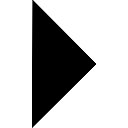
 显示该栏目以下所有产品
显示该栏目以下所有产品
